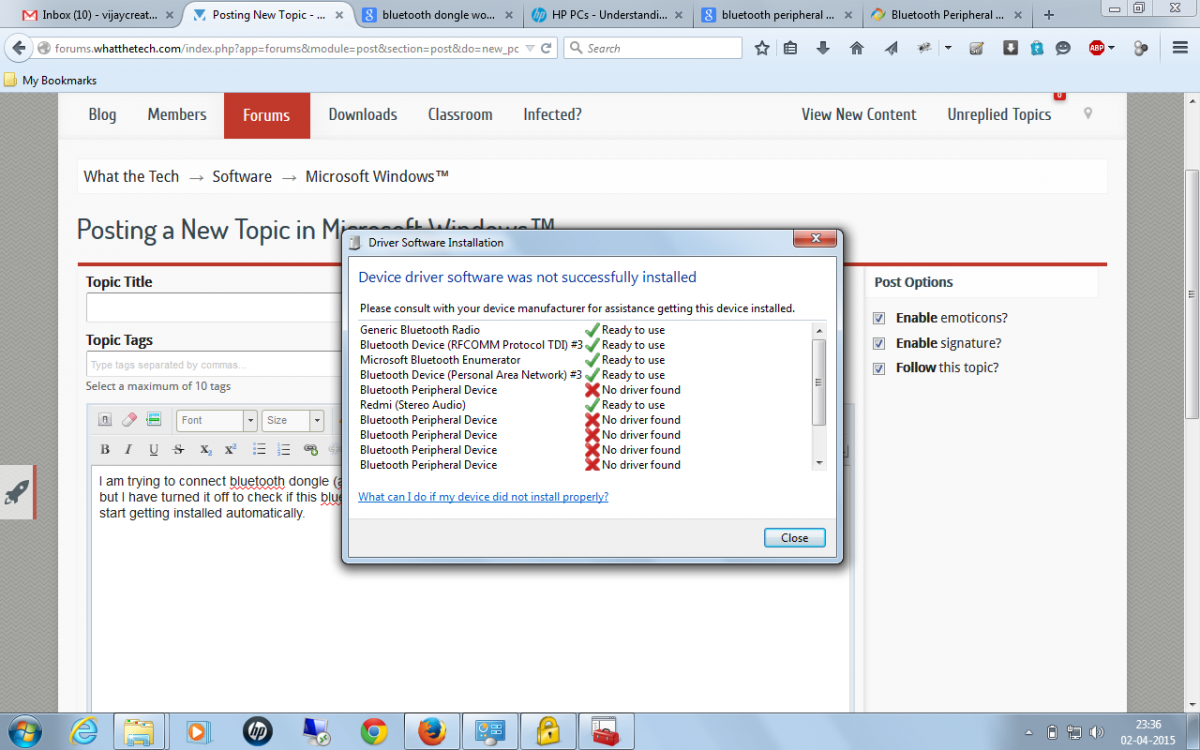Description: Bluetooth!Device (RFCOMM Protocol TDI) driver setup Version: 4.2.8 Date: 09 Sep 2014 Filesize: 0.81 MB Operating system: Windows XP, Visa, Windows 7,8 (32 & 64 bits).Original Title: Bluetooth Device (RFCOMM Protocol TDI #2 and various problem Hi, I don't really know much about computers, but I seemed to run into a plethora of.
-->Important APIs
This article provides an overview of Bluetooth RFCOMM in Universal Windows Platform (UWP) apps, along with example code on how to send or receive a file.
Important
You must declare the 'bluetooth' capability in Package.appxmanifest.
<Capabilities> <DeviceCapability Name='bluetooth' /> </Capabilities>
Overview

The APIs in the Windows.Devices.Bluetooth.Rfcomm namespace build on existing patterns for Windows.Devices, including enumeration and instantiation. Data reading and writing is designed to take advantage of established data stream patterns and objects in Windows.Storage.Streams. Service Discovery Protocol (SDP) attributes have a value and an expected type. However, some common devices have faulty implementations of SDP attributes where the value is not of the expected type. Additionally, many usages of RFCOMM do not require additional SDP attributes at all. For these reasons, this API offers access to the unparsed SDP data, from which developers can obtain the information they need.
The RFCOMM APIs use the concept of service identifiers. Although a service identifier is simply a 128-bit GUID, it is also commonly specified as either a 16- or 32-bit integer. The RFCOMM API offers a wrapper for service identifiers that allows them be specified and consumed as 128-bit GUIDs as well as 32-bit integers but does not offer 16-bit integers. This is not an issue for the API because languages will automatically upsize to a 32-bit integer and the identifier can still be correctly generated.
Apps can perform multi-step device operations in a background task so that they can run to completion even if the app is moved to the background and suspended. This allows for reliable device servicing such as changes to persistent settings or firmware, and content synchronization, without requiring the user to sit and watch a progress bar. Use the DeviceServicingTrigger for device servicing and the DeviceUseTrigger for content synchronization. Note that these background tasks constrain the amount of time the app can run in the background, and are not intended to allow indefinite operation or infinite synchronization.
For a complete code sample that details RFCOMM operation, see the Bluetooth Rfcomm Chat Sample on Github.
Send a file as a client
When sending a file, the most basic scenario is to connect to a paired device based on a desired service. This involves the following steps:
- Use the RfcommDeviceService.GetDeviceSelector* functions to help generate an AQS query that can be used to enumerated paired device instances of the desired service.
- Pick an enumerated device, create an RfcommDeviceService, and read the SDP attributes as needed (using established data helpers to parse the attribute's data).
- Create a socket and use the RfcommDeviceService.ConnectionHostName and RfcommDeviceService.ConnectionServiceName properties to StreamSocket.ConnectAsync to the remote device service with the appropriate parameters.
- Follow established data stream patterns to read chunks of data from the file and send it on the socket's StreamSocket.OutputStream to the device.
Receive File as a Server
Another common RFCOMM App scenario is to host a service on the PC and expose it for other devices.
Bluetooth Device Rfcomm Protocol Tdi Driver Xp 64-bit
- Create a RfcommServiceProvider to advertise the desired service.
- Set the SDP attributes as needed (using established data helpers to generate the attribute’s Data) and starts advertising the SDP records for other devices to retrieve.
- To connect to a client device, create a socket listener to start listening for incoming connection requests.
- When a connection is received, store the connected socket for later processing.
- Follow established data stream patterns to read chunks of data from the socket's InputStream and save it to a file.
Bluetooth Device Rfcomm Protocol Tdi Driver Xp Sp2
In order to persist an RFCOMM service in the background, use the RfcommConnectionTrigger. The background task is triggered on connection to the service. The developer receives a handle to the socket in the background task. The background task is long running and persists for as long as the socket is in use.